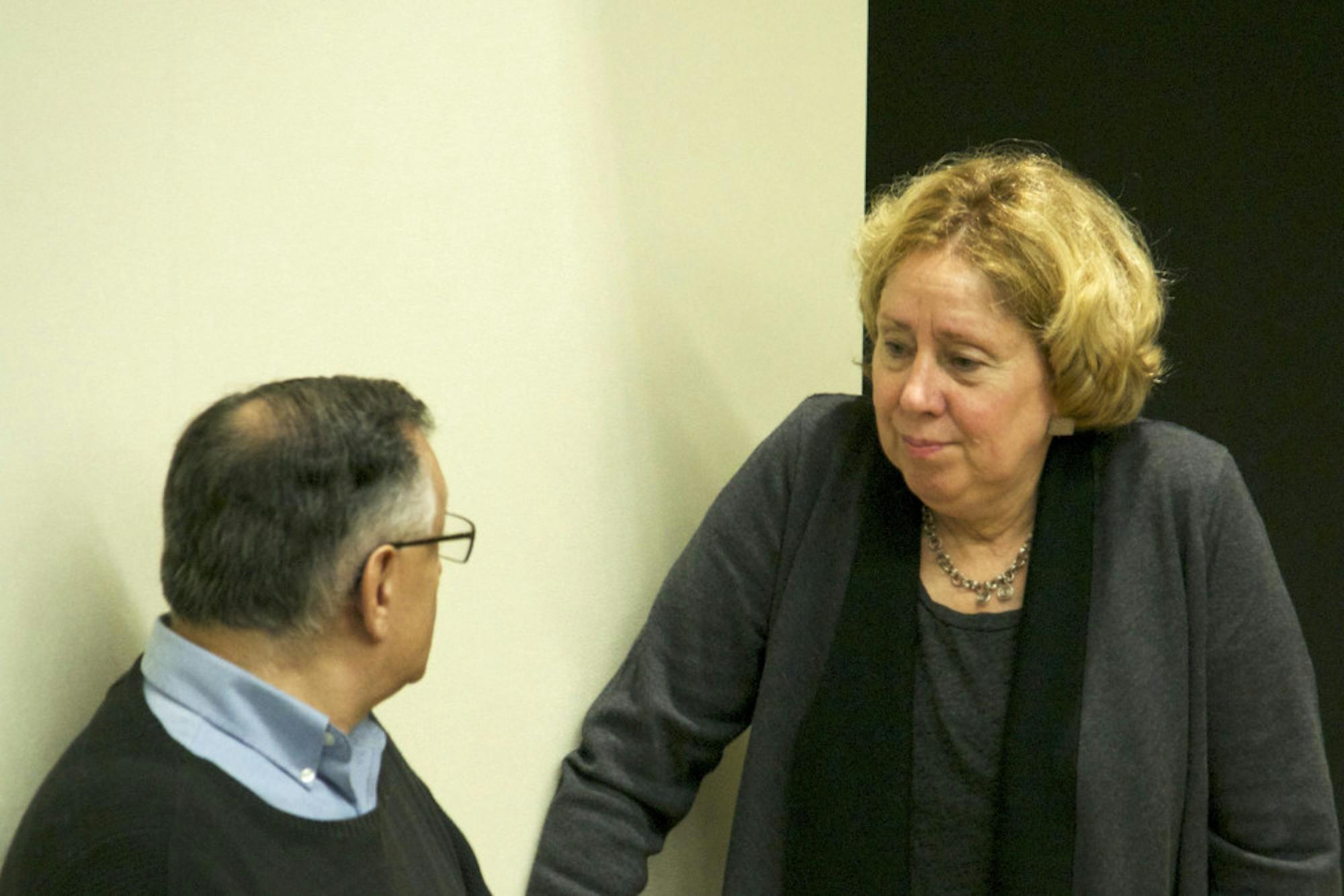The second annual “Free Thinkers” lecture series, presented by the Osher Lifelong Learning Institute at Tufts -- a community membership opportunity for adults seeking intellectual stimulation -- began last week by hosting Peter Diamond, a Nobel prize winning economist.
The series continued on Tuesday, Sept. 30 with Robin Fleming, a professor of early medieval history at Boston College, who is also a 2013 MacArthur "Genius" grant winner. Her lecture, entitled “Writing History from Bones,” focused on the importance of utilizing material culture and science to find out more about the history of the Early Medieval Era in Europe.
To begin her lecture, Fleming explained why material culture is particularly important to her research.
“I actually write history, not very much from text, because the period that I’m working in doesn’t have that many texts and the people I’m interested in never appear in texts, so instead I use material culture," she said.
Fleming mentioned four problems surrounding research of the Early Medieval Era: periodization, terminology, discipline and gender. She started by discussing gender. Today, the Early Medieval Era is largely remembered for what was accomplished by men, although women played equally, if not more important roles, according to Fleming.
“[We have become accustomed to writing] narratives focused [on] weapons-bearing males and [imagining] the big story of the period as a political one, concerning primarily ... the things that males do: invading, conquering, colonizing,” she said. "[However,] the majority of our genuine contemporary evidence, which is material rather than textual, is associated not with men but with late adolescent girls and with adult women."
According to Fleming, multiple cemetery excavations show that women were buried with more brooches and with more objects than men were. Fleming therefore suggested that historical writing ought to focus more on women than men.
Through two extended examples, Fleming discussed how researchers cannot take what they assume at first glance to be certain; much more examination is necessary. With the help of biochemical evidence, oxygen and strontium isotopes tell historians about the relative location of certain people during the Early Medieval Era, Fleming explained.
According to Fleming, rainwater is meshed into their bodies, and often the tracking of the oxygen isotopes using modern scientific technology can tell how far from a coast a person lived.
“Oxygen and strontium not only accumulate in bone, but in tooth enamel,” Fleming said.
By looking at the graves of young women at a cemetery in North Yorkshire, Fleming concluded that gravestones are not very reliable for tracing migration, according to what the graves had inside them and the position of the bones.
“Although these findings are based on only one cemetery and two isotopes, the evidence that I’ve just laid out is suggested and implies that women’s individual stories of migration are not reflected in their grave boards,” she said. “Perhaps as many as half of many adults who died in West Heslerton in the two and a half centuries that people were buried there were born someplace else.”
This proves that Heslerton was a relatively diverse society, one with mixed communities where people, namely women, came from different cultural backgrounds, according to Fleming. She later discussed how women who migrated to Heslerton tried different clothes and experimented with the material culture available in Britain.
Fleming also noted the importance of certain material objects found with the bones, saying that “things make people.” She compared two different brooches from two different places, explaining that while the dimensions of the brooches are very similar, differences can certainly be spotted.
“They’re made in entirely different ways with entirely different techniques,” she said.
According to Fleming, some objects found in the graves did not even belong to the culture she was studying. Many of the Roman wares found with these people had likely been dug from even older graves.
“Scavenging was a major economic occupation in this period,” she said. “People, as much as they were interested in getting old Roman pots, didn’t use the pots they were collecting for cooking and dining, even though the Roman fine wares were much nicer."
Fleming added that people of the time period only kept the base of the pots -- likely to use as discs.
“They don’t really care about pots as pots, they only care about the pots because they like the pot bottoms," she said. “This is a story of families and households; it’s not a story of war bands.”
Fleming concluded her lecture with two solidifying points. First, the time span of one's research is vital to the research process, and will affect a wide range of aspects. According to Fleming, the period she has been working with would look drastically different if she had begun her research right after the fall of Rome rather than starting around the year 300.
Second, she added that there is a growing divide between humanists and scientists -- a divide that she hopes to help close with her research.
“If we don’t do something about it, we’re going to end up with two different sets of experts, working on exactly the same problems, times and places, but who don’t ever read one another’s works and are not equipped to understand one another,” Fleming said.
‘Free Thinkers’ lecture series continues with famed historian Robin Fleming

Osher Lifelong Learning Institute hosts the second lecture in its "Free Thinkers" series, featuring historian Robin Fleming.





